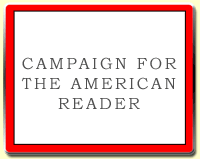 Leo Hollis was born in London in 1972, was educated at Stoneyhurst College and studied history at university. He is the author of number books on London including London Rising: The Men Who Made Modern London and Cities Are Good for You: The Genius of the Metropolis.
Leo Hollis was born in London in 1972, was educated at Stoneyhurst College and studied history at university. He is the author of number books on London including London Rising: The Men Who Made Modern London and Cities Are Good for You: The Genius of the Metropolis.For the Guardian he tagged ten top books about cities, including:
Behind the Beautiful Forevers by Katherine BooRead about the other entries on the list.
A brilliant and tireless work of journalism set in the slums close to Mumbai airport. Katherine Boo spent time talking to and observing the manycharacters who are given such full life in her pages. She does not come up with easy solutions, nor does she turn away from horrors – yet she allows individual lives to have their own dignity. There has been so much debate about the informal city and the economic potential of slums that it is worthwhile recalling the people who live there and the challenges they face.
Learn about Hollis's list of five notable books on why cities are good for you.
Also see: The top 10 cities in literature, Simon Jenkins's five best books on cities, and Pete Hamill's five best books about cities.
--Marshal Zeringue











































